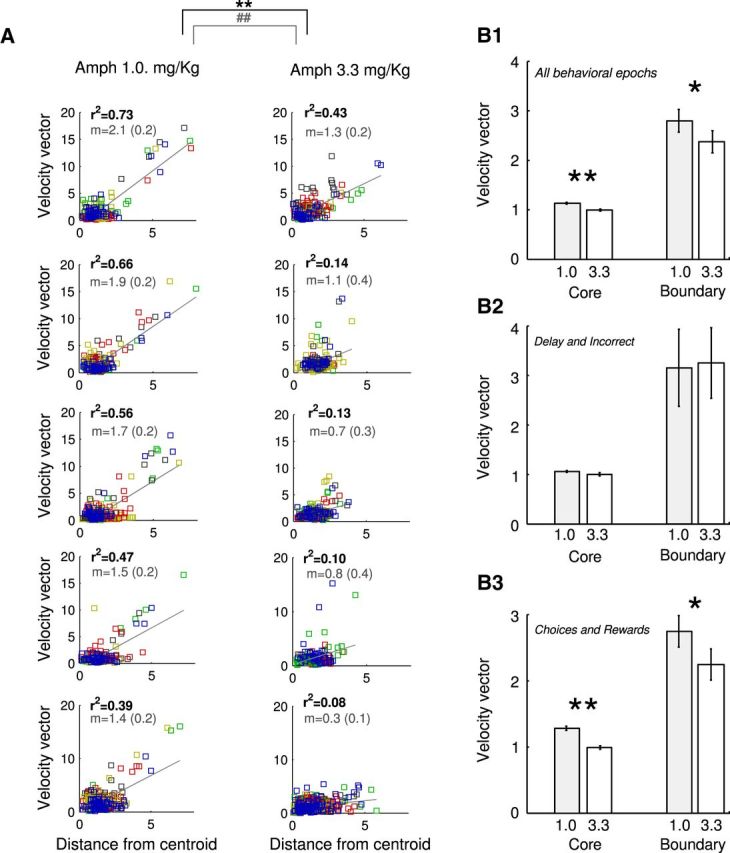Figure 8.

A high dose of AMPH reduces trajectory velocity in expanded neural state space. A, Regressions of the vector velocity on the distance from the centroid for each AMPH treatment reveal differences in the variance explained (inset, black text, r2) and slope [inset, gray text, slope mean slope (95% confidence interval width). **p < 0.01, rank-sum test for r2 comparisons; ##p < 0.01, t test for slope comparisons. B, Flow vectors were classified into those immediately preceding or entering a task-epoch (boundary vectors) and those within a task-epoch window (core vectors), and the velocity of the vector was measured for each. Collapsing across all behavioral epochs (B1), a significant difference in vector velocity was observed between the 1.0 and 3.3 mg/kg treated animals that was not observed when only the delay and incorrect epochs were considered (B2). Instead, the differences between the 1.0 and 3.3 mg/kg AMPH conditions could be attributed mainly to the choice and reward epochs (B3). *p < 0.05, **p < 0.01, rank-sum test.
